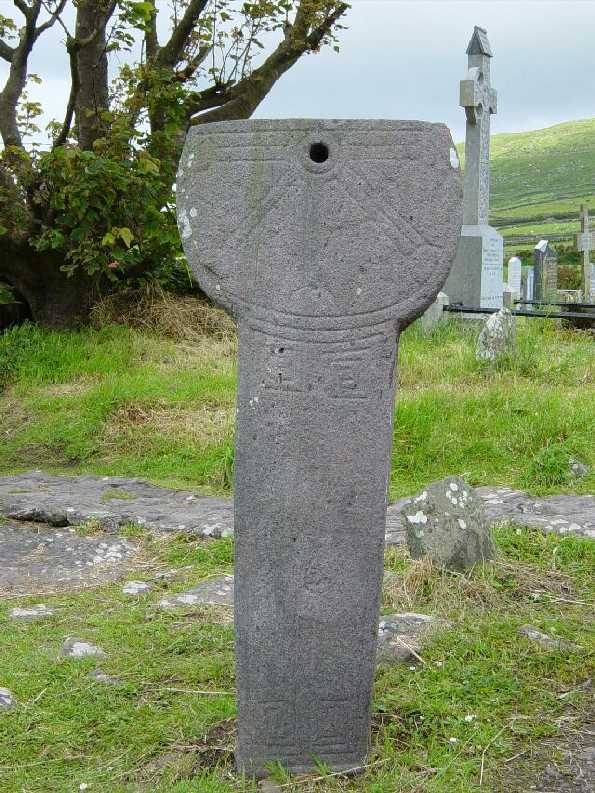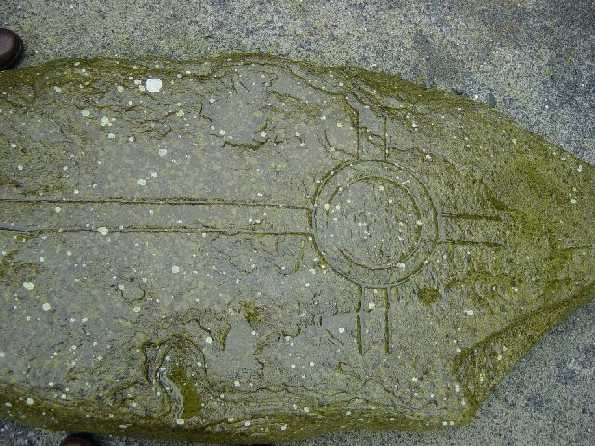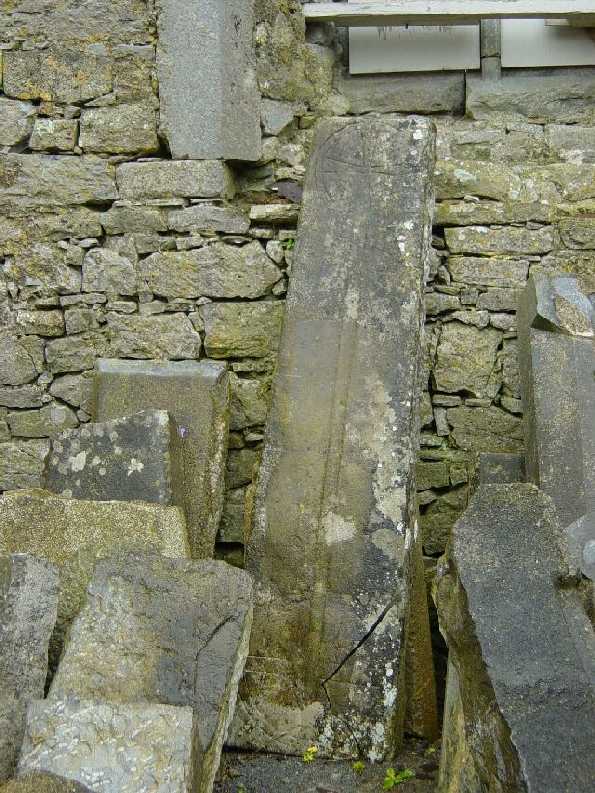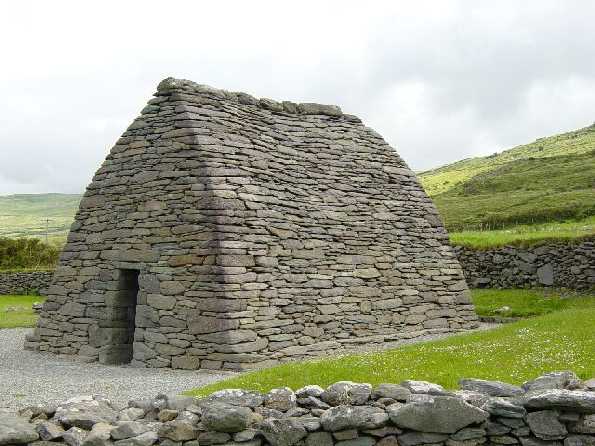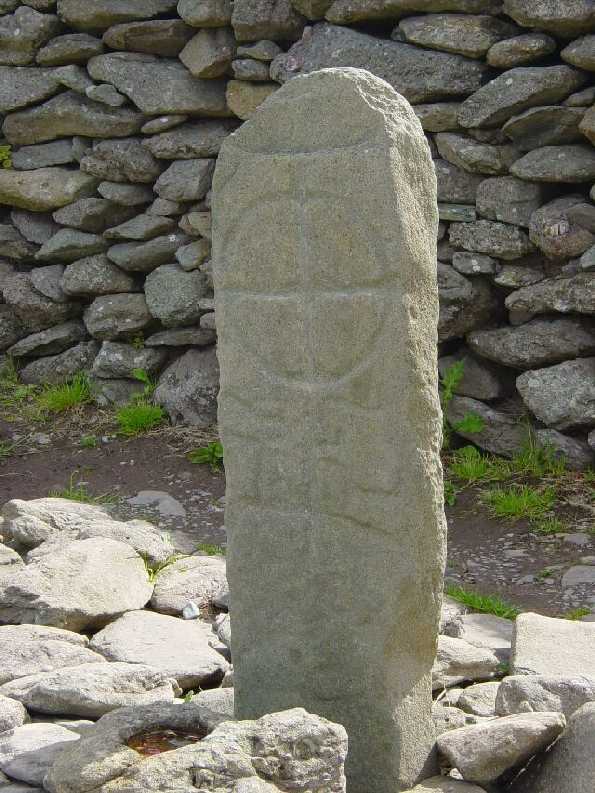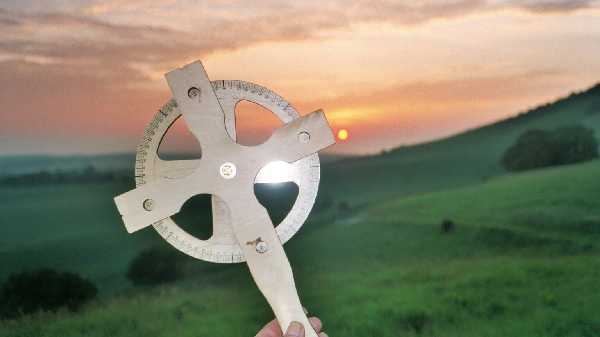 |
|
THE HANDSTAND |
SEPTEMBER 2002 |
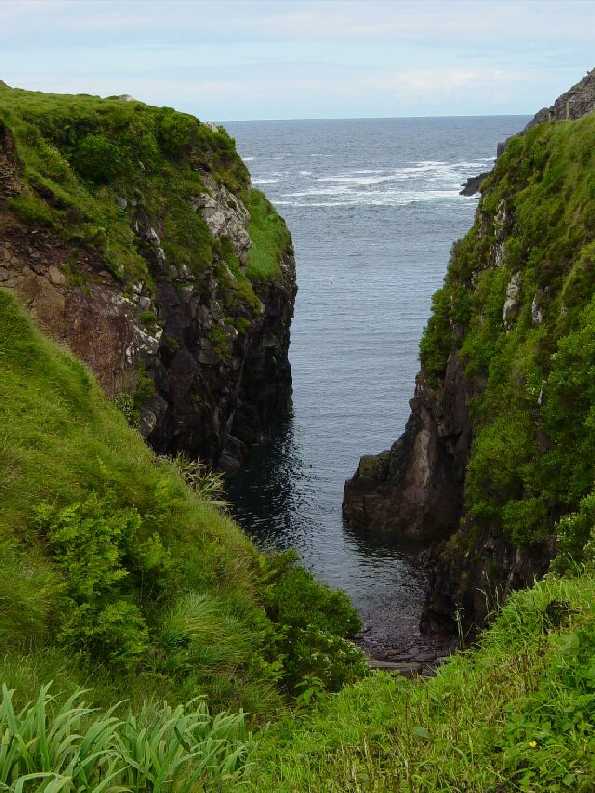 iThis is the embarkation point of Saint Brendan the Navigator when he set sail for America from Ireland over 1,400 years ago Brendan the Navigator and the Working Celtic cross By Crichton E M
Miller©July, 2002. ©2002 A poem by Crichton E M Miller " Far across the distant horizon, over mighty oceans lie the promised lands Passed in legend from mouth to mouth down the ages by the ancient sages who sang in spirit and in mind Lost voices whispering on the breeze of time call to me to hear their ghostly choir" Oh aches my heart to sail the seas on wind and tide With knowledge of the stars and Cross , as Brendan did When first he heard this timeless song and gazed across the western sea long, long ago. in an ancient Celtic land" The Voyage of St Brendan Did Brendan the Navigator have knowledge of the Celtic cross as an instrument for navigation? Brendan the Navigator is a legend amongst the Irish and Celtic people for many reasons.There are many people throughout the world who would like to see more evidence that the transatlantic voyages of St Brendan could be more than just exaggerated stories.The current academic position against such a voyage of discovery 900 years before Christopher Columbus rests solely of the presumption that St Brendan, like earlier potential transatlantic voyagers, had no knowledge of the fundamentals of navigation. There can be little argument about the other side of the technology required, which is a substantial and seaworthy enough craft to make the voyage. This point was proved when voyage in the footsteps of St Brendan, was made by Tim Severin in 1977. To fulfill the "The Brendan Voyage", Tim Severin successfully built a currach, faithful to the construction methods of 6th century shipwrights and sailed across the Atlantic proving that the journey could have been done in principle. So, there only remains the question of navigation, since motivation is clearly shown. As far as this article is concerned Crichton's intent is to show, in combination with his earlier discovery, that the Celtic cross was a working navigational instrument, that the legends of St Brendan crossing the Atlantic to America hold considerable potential for truth.(See June 2002 edition of The Handstand in the Archive for details of the navigational instrument.) This being that it is highly likely that St Brendan understood the cross and plumbline for its true value, using it in combination with the more ancient knowledge of his own earlier ancestors. Also that this discovery was either esoteric in origin or that he discovered this knowledge from the prehistoric mounds at Ardfert . Here is what Maureen Palmer has to say: Ardfert
was 'Dedicated' to Brendan, it is not the site of his own
monastery, there are many sites dedicated to this saint,
he was very popular in this part of the World. I visited
the ruins of his own monastery and it is located on
the Dingle peninsular, very close to the photograph of
where he set sail from. There is a National Heritage
plaque at both the take off point, his own Monastery
dedicating and protecting both these sites. The Ruins of
his Monastery are located where the sundial is. Ard Fertu means the height of the burial mounds. Ardfert cathedral is built on the earlier monastic site dedicated to St Brendan and is in the process of being restored, although not much is known about the earlier site only that over two thousand medieval burials were excavated and some of the burials had been aligned to an earlier structure. Brendan was born in Ciarraighe Luachra, in County Kerry, Ireland in 484 AD and grew up by the sea and was a charismatic leader who gained many followers, this resulted in the founding of monastic communities along the West Coast of Ireland over a period of some 30 years.What is not generally understood, is that in the days of St Brendan, there were very few roads. This was in the early days of the conversion of "Pagans" to Christianity by the Holy Roman Empire.The lack of safe overland routes made traveling by land a very difficult and sometimes hazardous affair. The way in which people traveled around and traded, in ancient times, was by sea.Most major settlements were by river estuaries and still are to this day. Evidence of this is revealed in the monastic sites that Brendan was associated with that are located close to the River Shannon. Brendan is also known to have visited Iona in Scotland, France and Wales in his voyages. He started Monasteries in Scotland in locations, by the water, near the sites of more ancient standing stones at Kilbrandon and Kilbrennan Sound. Of his spiritual power and Missionary zeal, there can be no doubt. This is shown by the expansion of religious houses to accommodate pilgrims throughout Ireland. St
Brendan the Navigator’s most celebrated foundation
was Clonfert in County Galway.He died in 577AD in sister
Briga’s convent at Enachduin, now known as
Annaghdown.His grave faces the front door of the
Cathedral in Clonfert. www.o-r-g.org/~azaroth/university/brendan1/ 'Navigatio Sancti Brendani' was an account written by an Irish monk
in the ninth or tenth century and describes the seven
year voyage of Saint Brendan. More than 100 medieval
Latin manuscripts of this Voyage of Brendan still exist
today. St Brendan was known to have met St Columba and to have voyaged to France with St Malo. The ancient French seafaring port of St Malo is named after the Welsh Saint and is the birth place of Jacques Cartier who was the first European reputed to land in Canada in 1534AD. St Brendan set forth on a voyage to find the Blessed Islands, a myth even in his time, They were looking for the Promised Land, a fabled place of plenty beyond the western horizon. I believe that these ancient legends came from the earlier sea voyaging "Celtic" peoples.Such legends may be seen in the funerary culture of Ancient Egypt thousands of years earlier. There are varying accounts of between 60 and 150 monks accompanying St Brendan on this hazardous voyage and the many accounts of their amazing adventures are well documented. Now, It is said that there is no smoke without fire and there is considerable evidence of artifacts in America that bear out the possibility that St Brendan made it in the steps of his Pagan ancestors.So is there evidence of pre Christian crosses being associated with Brendan? Is there an astronomical prehistoric understanding of astronomy and navigation indicated in the Ardfert crosses? " The Cross Slab was found in the oldest level which has not yet been properly excavated and the stones were in an enclosure, Inside the Cathedral there are some exhibition boards of the site during the various periods of restoration and a photo of the Cross Slab. The note underneath it just said pre-historic, 'perhaps used as a boundary marker'.
Maureen Palmer wrote: "In the enclosure which houses the stones I noticed another one leaning against the wall. We were informed that it was the same period as the Cross Slab, but I noticed this one has the circle both top and bottom. What do you make of it?"
What I make of it is the following:"The lower cross is a perfect image of the earliest sextant (astrolabe) known to Man.The Cross and Plumbline converted into the spinning wheel of the Celtic cross, an instrument that is stable at sea.The upper part of the double cross is the same as the shapes worn on the chests of the Knights Templar 700 years later.It is also the same style as the depictions on the sails of St Brendan's ship, as well as that of Christopher Columbus and it implies a deep understanding of the motions of Precession.The angles formed by the cross arms represent the seasonal 46.8 degree wobble of the earth, that results in our four seasons. This astronomical knowledge was inherited from our pre historic ancestors that built stone henge and the pyramids.With the working Celtic cross, you can find both latitude and longitude, since it allows the user to both measure the angle of heavenly bodies and tell the time at a local level as well as at a prime meridian" Here is more from Maureen Palmer
“I think Brendan probably got his Knowledge from the 'Beehive' peoples. Nothing much is known about these peoples, there is no written history, but their monuments and dwelling places show they had an amazing knowledge of structure and they lived always very close to the coastline in houses similar in shape to Beehives. One of the few Heritage pre-Christian protected monuments constructed by the Beehive Peoples is what is called 'The Oratory' situated at Gallerus on the Dingle peninsula. This structure is built in the shape of an upturned boat, and aligned in such a manner that the Sun entered a small window facing East in the morning and entered the doorway facing West in the evening. The building method they used is what is known as 'corbelling', they did not use any mortar in these constructions, yet in all the hundreds of years that this monument has stood not one single drop of rainwater has seeped inside. "The Oratory, although quite ancient was built on an even older site and guess what I found there?"
Is the net finally closing on the truth about our ancient seafaring past? Was
Brendan another of those adventuring stalwarts who made
it to America like his ancestors before him, using an
even older knowledge of stellar navigation than we can
yet comprehend? If you want to learn how the cross really works go to www.crichtonmiller.com or visit www.pendulumpublishing.co.uk for a synopsis of Crichton’s book “ The Golden Thread of Time” ISBN 0-9541639-0-7 [1] Navigatio Sancti Brendani Abbatis. ISBN 1-85182-047-7. Editor: Carl Selmer. Four Courts Press [2]
www.o-r-g.org/~azaroth/university/brendan1/
In a program shortly to be released by the National Geographic on 17th September 2002 showing the live opening of "Gantenbrinks door" in the south shaft of the Queens chamber , it is reported that Mr Gantenbrink is not to be included or credited with his discovery in 1993/4 of the famous "Gantenbrink's door" or for his other remarkable discoveries in the Great Pyramid of Khufu using his tiny robot known as "Uphaut", which now resides in the British Museum. His contribution to modern Archaeology and Egyptology is enormous and many revelations about our ancestors abilities are starting to emerge from his work which was largely self financed and technologically difficult. Millions of people have waited nearly 9 years to see this event which appears to have been constantly delayed or opposed in some form or another. The discovery that a form of cross, similar to the Christian cross was used as a theodolite or inclinometer to design the pyramids , measure the earth and work out the angles of the stars and constellations could not have happened without his work. www.crichtonmiller.com It has been reported that Mr Gantenbrink was not informed that this program was to take place, that he was not invited and that the door will be opened using a robot developed by NASA that is equipped with an industrial bore scope and ground penetrating radar as originally suggested by Rudolph himself to Zahi Hawass, the Director of Antiquities in Egypt. To see the remarkable work of Rudolph Gantenbrink and understand the full story, visit his site at: Uphaut Project http://www.cheops.org. If this alleged report of possible plagiarism is true, it fall as an absolute disgrace upon National Geographic. To see the discussion on this potential scandal go to: Please Read ASAP:
Opportunity for Justice for
1. National Geographic
Television (they say, "Let us www.crichtonmiller.com has written
to the National Geographic on 13th August asking for a
rebuttal or confirmation, so far no reply or
acknowledgment has been forthcoming. LETTER SINCE RECEIVED
FROM NATIONAL GEOGRAPHIC COMMUNICATIONS: |
|
